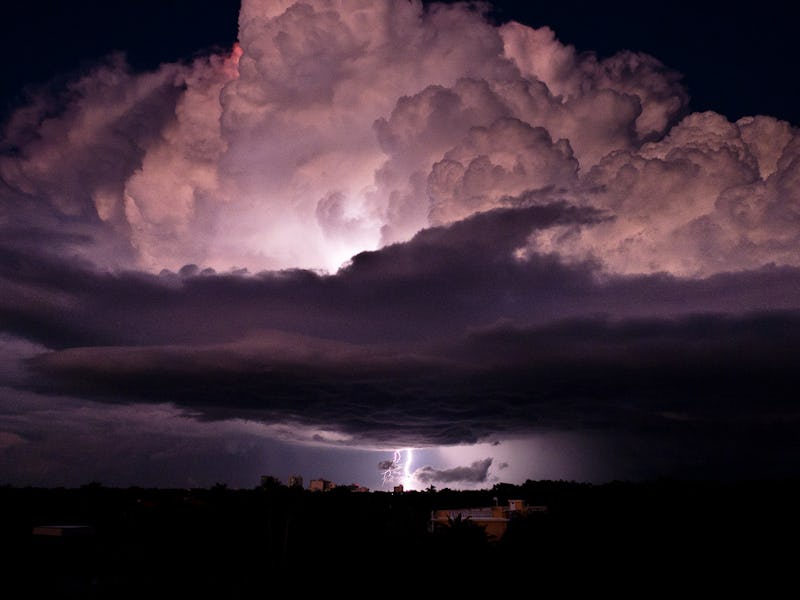What If a Cold Spell Suddenly Hit Miami?
In which the swimsuit industry takes a beating.

Here at ‘Inverse’, we like to explore horrifying, if unlikely, scenarios, which is why we’ve publicly mulled what would happen if Cleveland’s corpses rose from their graves, if a Tyrannosaur got loose in Minneapolis, and if there was a nuclear meltdown in Kansas. This week, we take the heat out of Miami.
Thanks to a weird and unseasonably warm start to November, the only thing that would snap America back to average would be a sudden downward shift in temperature. But what if that cold blow didn’t land where expected, but bienvenido’d its way to Miami, hotbed of perspiring tourists and, almost ironically, Hawaiian-shirted cruisers? What if our hottest major city suddenly froze?
The most extreme recorded temperature change in a 24-hour period was a delta of 103 Fahrenheit degrees, on January 14, 1972 in Loma, Montana. Conditions known as a chinook wind warmed Loma’s bones to about 54 degrees. (A reverse chilling effect in Miami is statistically and stratospherically so unlikely as to be impossible, but that hasn’t stopped us before!) Subtract 103 degrees from Miami’s November average, and you’re at a very brisk -30.
Humans don’t handle sudden shifts in temperature well; even going from the hot heat of outdoors to the relative cold of air conditioning can be physiologically jarring to the eyes and mucous membranes. Huge swings, as evidenced by the 70-degree change in the Great Blue Norther of November 1911, can be lethal. A blast of cold air claimed a dozen lives across the U.S. and triggered dramatic stormy events. As one observer in Missouri wrote:
“By 2:30 pm…a dense greenish black bank of clouds was rising along the western horizon. By 3:30 pm dark and ominous appearing clouds extended along the northwestern horizon…and at 3:45 pm the winds shifted to northwest and immediately reached an extreme velocity of 74 mph. A temperature of 80 was recorded, breaking the record high temperature during any previous November in the last 25 years…and falling from 80 to 13 at midnight, which likewise breaks the record for low temperature this early in November. Rain, hail, sleet, and snow fell within a period of fewer than 2 hours, and a moderate electric storm commenced after the temperature had fallen to below freezing and more than an hour after the wind had shifted.”
Miami doesn’t really do snow. When it fell for the first time in recorded history in January 1977, headlines screamed and people lost livelihoods as crops withered. If brutal and theoretical cold temperatures stuck around for any length of time, winter tourism — perhaps not the umbilicus that it once was in Miami, but still a vital part of the economy — would take a hit. Surf shops would lose out on bikini sales, but perhaps they’d make it up with a run on Ugg boots and windbreakers after the city’s parka stock depleted.
Oh, and there would be car accidents. A considerable part of the city perpetually flirts with submersion. Salt water doesn’t freeze quickly, but brackish and fresh water do. That’s a lot of shattered cement pools, a lot of dead mangroves, and a lot of very confused reptiles looking for warmth. Locking the doors against stray Burmese Pythons and confuddled alligators would be a logical second step, behind only adjusting the thermostats.
Psychologically, the cold might change the Miami mindset in strange ways — murder is likely to go down, but carjackings up. On the lighter side, one 2012 study suggests we prefer romantic movies when we’re cold. In apartments and hotel rooms around the city, the frozen masses would clutch together for warmth and solace in front of The Birdcage, as pipes burst and palm trees wilted.